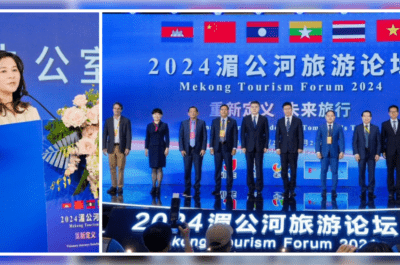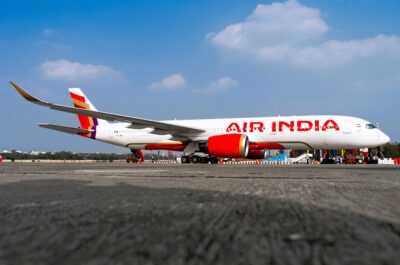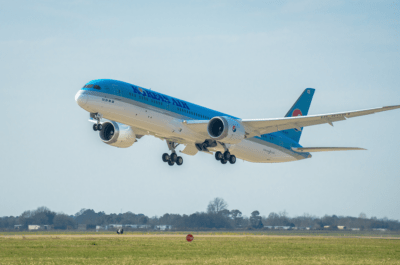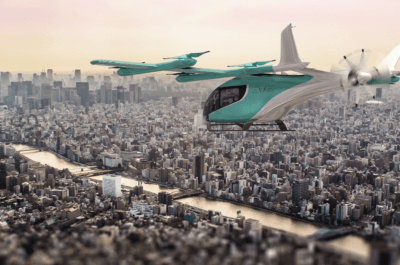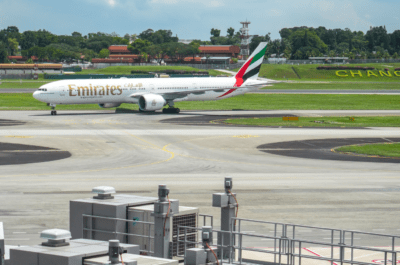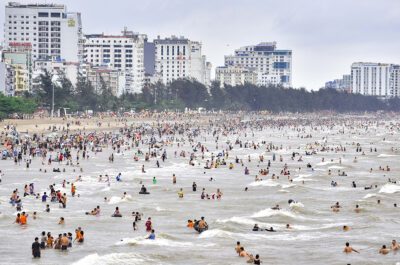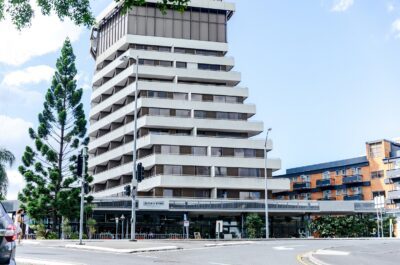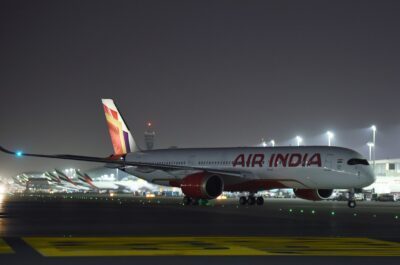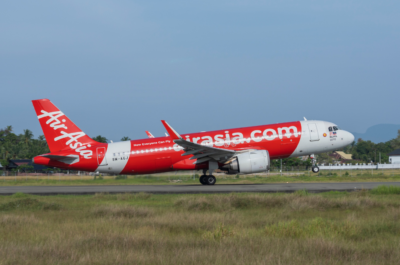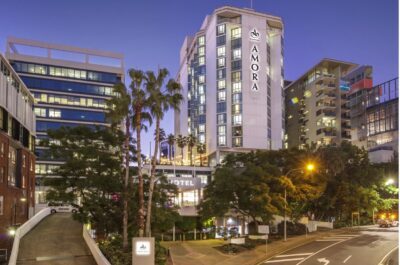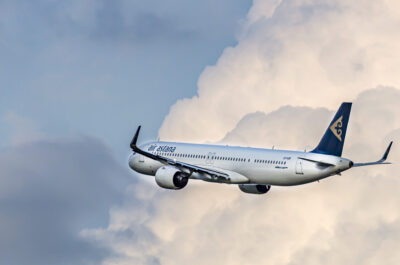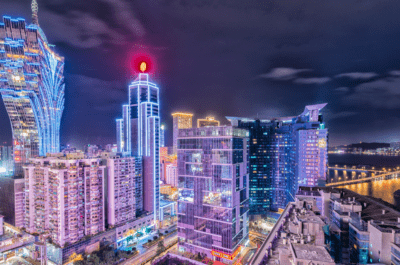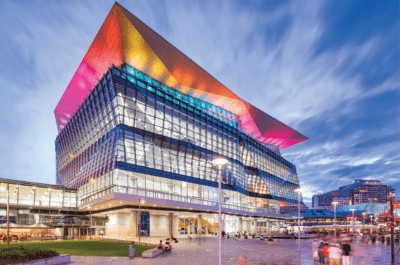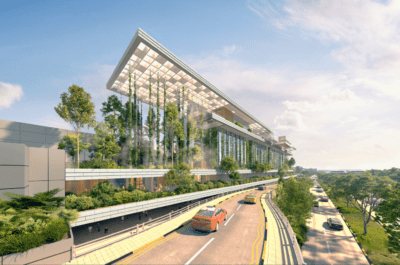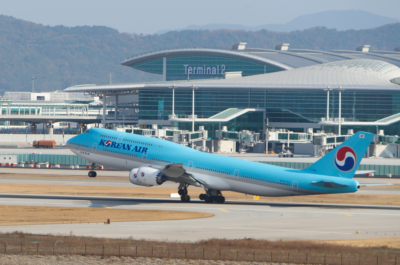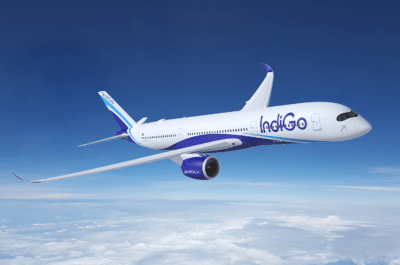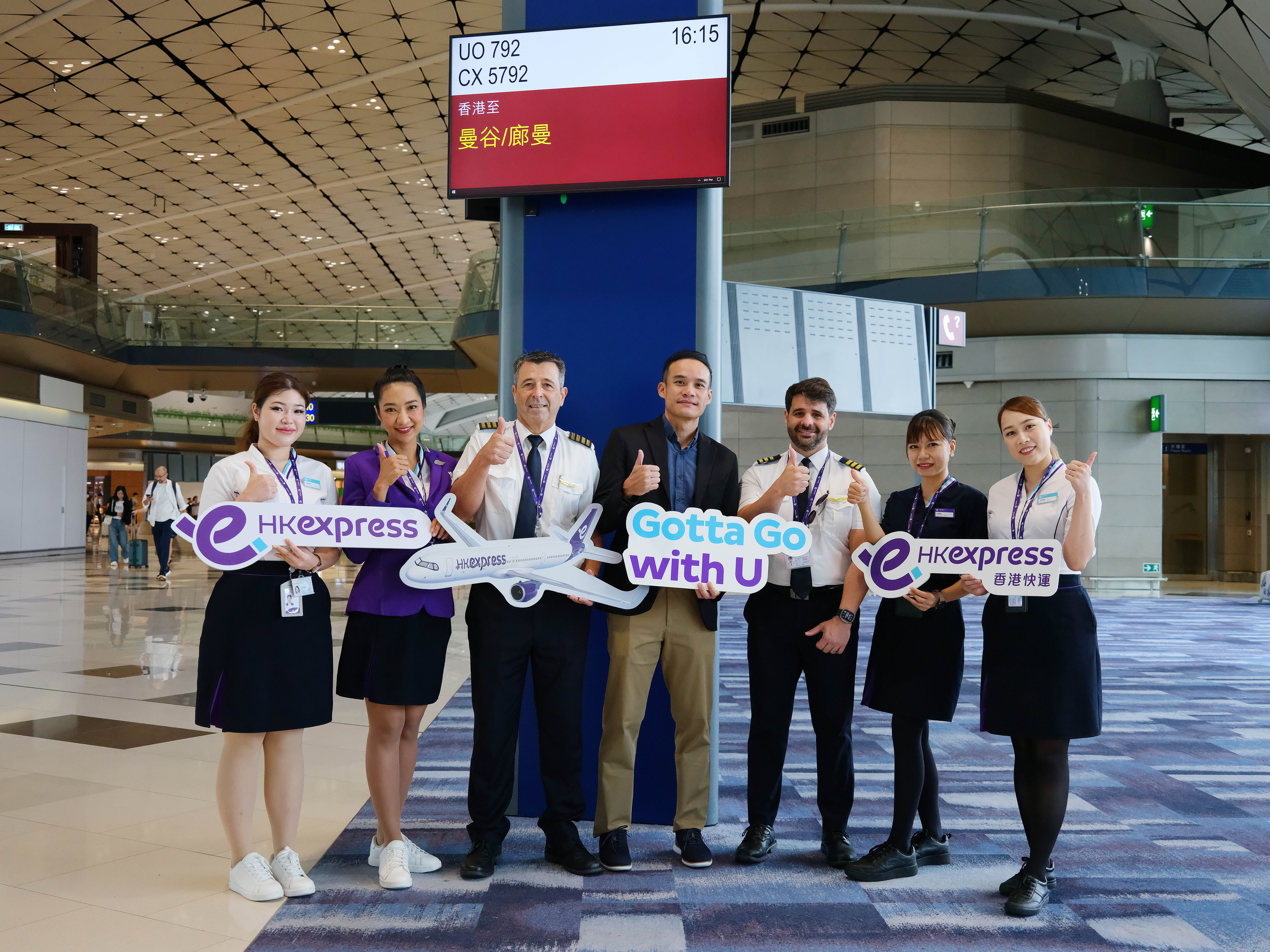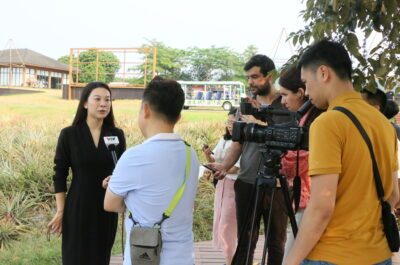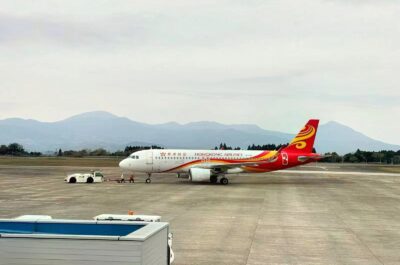China Southern Airlines offers this special preview of the new Guangzhou Baiyun International Airport, slated to open this week…
China Southern Airlines offers this special preview of the new Guangzhou Baiyun International Airport, slated to open this week. “After four years of intense construction, the dazzling new Guangzhou Baiyun International Airport will soon be unveiled to the world. This new airport will instantly become one of China’s three largest gateway airports … serving as a window to the world of Guangzhou’s unrelenting modernization and future visage of air transportation in the booming Pearl River Delta,” said Mr. Li Kun, Vice President, China Southern Airlines
The new Guangzhou Baiyun International Airport is situated north of Guangzhou – 23 kilometers away from the current city airport.
The current city airport – opened in 1957 – covers an area of more than 3 Million square meters, with 83 domestic and 25 international routes in daily operation … and after more than 46 years is still the largest Chinese airport for daily take-offs & landings and flight frequencies. In 2003, the airport handled more than 142,000 take-offs & landings; a throughput of 15,012,700 passengers and 544,000 tons of cargo, mail and luggage. Today, like an aging bus station, the current city airport is overtaxed and simply cannot manage the growth projected for Guangdong Province over the next decade.
In a vast area spanning more than seven kilometers long by three kilometers wide, the new Guangzhou Baiyun International Airport is divided into three large zones: offices, terminal and aircraft maintenance & cargo facilities all situated in the south, center and north sections between the two runways.
The office zone stands on the two sides of the south-entrance road. On the east side is the airport authority’s office complex and the airport customs/immigration/quarantine office building as well as the airport power supply facility, the airport authority’s field ground handling, Medical First Aid Station, Fire Station and the power converting station with a fuel warehouse located in the far end.
On the west side of the south-entrance road is the local Air Traffic Management Bureau’s office building, China Southern Airlines’ office complex, Air Catering Company and power converting station. In the far end of the southwest side of the west runway is an environmental treatment area to dispose of airport waste water and safely burn/dispose more than 10 tons of waste food collected each day from aircraft using the airport.
The terminal zone is situated in the middle of the complex between the two runways. Both the south and north entrance roads traverse through the east and west sides of this area which covers the terminal building, the Air Traffic Bureau’s office complex, the airport hotel and the parking facility.
The aircraft maintenance & cargo zone stands on the east and west sides of the north-entrance road to the north side of the two runways. The aircraft maintenance facility (GAMECO) is on the east side – offering a massive hanger of 96,000 square meters – capable of managing two wide-body aircraft and nine narrow-body planes at the same time, one field training base for college students, refrigeration station, water supply station, fire station, aircraft engine test cell apron and aircraft cleaning apron.
The new cargo area stands on the west side of the road equipped with cargo warehouses, aviation express, postal air express and business jet base. The cargo warehouse covers an area of more than 110,000 square meters.
The massive passenger terminal structure of the new airport is composed of one main terminal, two connected terminals and four main corridors. The connected terminals and passenger corridors are symmetrically situated on the two sides of the main terminal, which is centered on the central axis of the new airport with the left and right sides symmetrical to each other.
The terminal building covers an area spanning 350,000 square meters and is expected to manage more than 25 Million passengers per year through 2010. The exterior of the terminal building features a natural smooth arc anchored by a massive steel superstructure and gleaming glass walls. This magnificent glass and steel terminal “palace” – from east to west – spans 220 meters and a ceiling height of more than 55 meters. The roof of the main terminal building is made of transparent copings in a tension film structure.
The overall ambiance of the main building offers travelers an elegant style with a relaxed cultured modern flavor, illustrating the Pearl River Delta’s transportation “leap forward” into the future. In the center of the terminal are 32 palm trees which have been safely chemically treated to remain vibrant and colorful.
The airport’s flight zone covers an area of more than 720,000 square meters and is divided into two flight areas with two individual runways paralleling each other. The east flight area was designed with ICAO 4F airport standards, meeting the requirements for the maximum take-off weight of the largest Airbus A380 aircraft. The west flight area was designed with ICAO 4E airport standards. The runway in the east flight area is 3,800m X 60m – while the runway in the west flight area is 3,600m X 45m.
The two runways are equipped with paralleled taxiways. The distance between the center lines of the two runways is 2,200 meters. The south end of the west runway staggers south 400 meters from the south end of the east runway. Each runway has six exit taxiways. The apron covers an area of 860,000 square meters with available parking for 66 aircraft.
Between the east and west runways are three linking bridges (with one in the north and two in the south), specially designed for aircraft to taxi between the east and west runways. The linking bridge in the north and the one in the south are currently the widest aircraft taxi bridges in mainland China as well as the largest spanned bridge with the widest bridge surface in China. Passengers, entering the new airport from both the south and north by car, will be able to see aircraft taxiing across these bridges.
The new airport is equipped with more than 8,000 lights – at a cost of more than RMB 160 Million. The varied lights for guaranteeing aircraft take-off and landings are all under computer control with all interior lighting brightness automatically adjusted.
The airport’s new office complex is the central operational center for aircraft both in flight and taxiing on the tarmac … and is equipped with flight service facilities for air traffic control, communication navigation, cable communications, flight information and weather service.
In addition, the complex operates four sets of instrument landing systems with one positioned in each end of the two runways, radar monitoring system and air traffic control (ATC) service system networked with the Xiling Regional Air Traffic Management Center located in the northwest quadrant of the new airport.
The ATC tower at the new airport is 112 meters high and is the highest point of the complex with 14 control & monitoring positions including seven designated for the east runway, six for the west and one main position.
Parking is available for private automobiles is situated on the south and north sides of the terminal building with open parking on the south side (220,000 square meters) and the parking structure on the north side (460,000 square meters) offer a joint capacity of more than 4,800 vehicles.
A wide-ranging transportation network from Guangzhou City includes an airport express rail service which will link-up with the current four lines of the Guangzhou subway to form an extensive transportation system which will speed passengers from north subway terminus on the ground floor within the main terminal building. Passengers in Guangzhou, even those in southern end of Panyu District will be able to take the subway directly to the terminal building.
The south-entrance road is linked to the new airport highway, northward running through the two paralleled runways and then connected to National Highway 1908.
With this convenient ground transportation network, passengers can easily reach the new airport from nearly any direction.
As the major anchor carrier at the new Guangzhou Baiyun International Airport, China Southern Airlines has been actively participating in the varied preparations for the new airport, including the complex’s feasibility study and overall design.
Giving full consideration to safe flight operations at the new airport, China Southern Airlines has also reserved significant space for its future development at the Guangzhou Baiyun International Airport. China Southern Airlines’ new airport base is located in the south and north areas of the new complex, with its office complex and the air catering company in the south and cargo facility, aircraft maintenance, field services and 110KV high voltage power converting station in the north.
The two south and north areas are separated by the terminal building, forming the two major zones for China Southern Airlines’ base office complex and operations, serving as a strong support for the new airport base’s modern operations and all domestic and international carriers’ operations.
In addition to managing 25 Million passengers each year, the new airport’s current construction is designed to move more than 1 Million tons of cargo annually through 2010. North of the terminal building, an additional second passenger terminal, apron and linking bridges is planned for the new airport’s second phase as the third runway is planned for the future.
Vicky is the co-founder of TravelDailyNews Media Network where she is the Editor-in Chief. She is also responsible for the daily operation and the financial policy. She holds a Bachelor's degree in Tourism Business Administration from the Technical University of Athens and a Master in Business Administration (MBA) from the University of Wales. She has many years of both academic and industrial experience within the travel industry. She has written/edited numerous articles in various tourism magazines.


